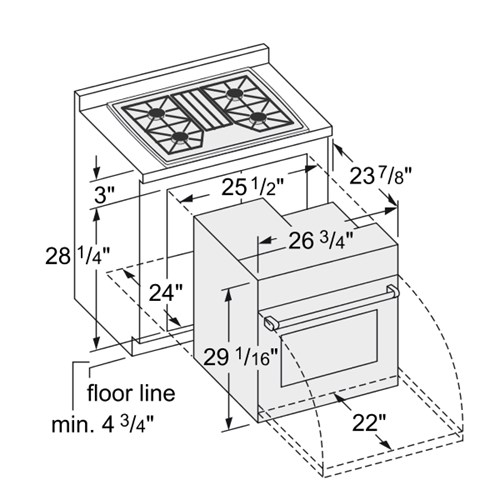Router Bits for Raised Panels
Horizontal versus vertical bits for cutting raised panels. January 28, 2004
Question
I am building raised panel doors (12"w x 42"h) out of maple. I plan on using a 1/2" vertical ogee router bit to raise the panels. What is the best way to do this? Also, I am using 3/4" stock for the panels, so I will have to back cut the inside to ensure a flush fit. Any suggestions would be appreciated.
Forum Responses
(Cabinetmaking Forum)
From contributor A:
Different companies make a back cutter, which works great. As for the vertical bit, have never used one. I always do mine with a horizontal cutter. Don't know how you would do an arch, crown with a vertical bit.
From contributor B:
I have used the vertical raised panel bits with success by using a featherboard positioned horizontally just above the cutter. Also use a tall fence. The only benefit I see to vertical bits is that you can seem to get by with a less powerful router due to bit diameter.
From contributor C:
I would not use a vertical bit. You are going to have a panel three times taller than wide - makes for a sticky situation. You would either need a tall fence, or mount the router horizontally with a wide table. You must keep pressure over the bit, and keep the panel flat against the fence/table.
I would buy a horizontal bit, with a back cutter if you prefer, and make successive passes. If you are only making a few, try Woodline.
From contributor D:
A horizontal router table to raise the panels on would be faster, safer and less of a PITA, over running them vertical or freehand. You can back cut with a router bit, table saw, etc.
From contributor E:
I have had problems with vertical bits before and switched to all horizontal bits. My problem, with what may have been not the best quality material, was some tearing and splintering, especially on a part with a wide cove profile. One of my guesses would be that even at 10,000 rpm, the smaller diameter of a vertical cutter creates less surface speed, and with a vertical cutter you are more or less scooping the material off with the grain, and with a horizontal cutter you are cutting across the grain, more of a sheering. Think of it this way - going with the grain on a vertical cutter you are lifting the material, (if you are conventional milling and not climbing) and with a horizontal cutter you are slicing it off kind of like a lawn mower.
From contributor B:
I agree with everyone else's comments. I now use a Ritter R-30 door shaper with powerfeeders. Horizontal cutters of course. However, I was aiming to help you get by with what you have. I would probably make the crossgrain cut before I ripped the panel to final size. Roughly twice the size of the panel so you are not so narrow and then rip it in half to finish.
From the original questioner:
Thanks for the tips. Good points are the arch limitations, tearout, fence, and router position. Only reason I went with the vertical bit was I needed a specific ogee bit that I couldn't find in the horizontal variety, i.e. one that cut 1 1/2" deep and left a square (as opposed to slightly rounded) profile at the inside edge of the panel. Otherwise, a horizontal with back cutter would be much easier, especially given the height of the panels.
From contributor F:
I use a vertical ogee raised panel bit and have had pretty good success. I have a craftsman router table and it will not accommodate a horizontal bit because the hole is not large enough. Craftsman make an auxiliary fence that mounts to the table and holds your material up against router table fence. This fence has to be tightened down to where it barely allows the work piece to pass between the two fences, without any play. I don't see how a vertical bit could be used without this fence. Having said all that, if my table would accommodate one, I would use a horizontal bit. I think they work better.
The comments below were added after this Forum discussion was archived as a Knowledge Base article (add your comment).
Comment from contributor P:
Using a vertical panel raiser is no problem if you use a trapping fence against the table fence. I use a couple of pieces of 4 x 2 screwed together to make right angle, then clamped to the table using G clamps. Machine the panel in 4 passes, moving the 2 fences back each time. The last pass should be a light cut to ensure a good finish. By the way, you can run at 22000 rpm with these cutters.
